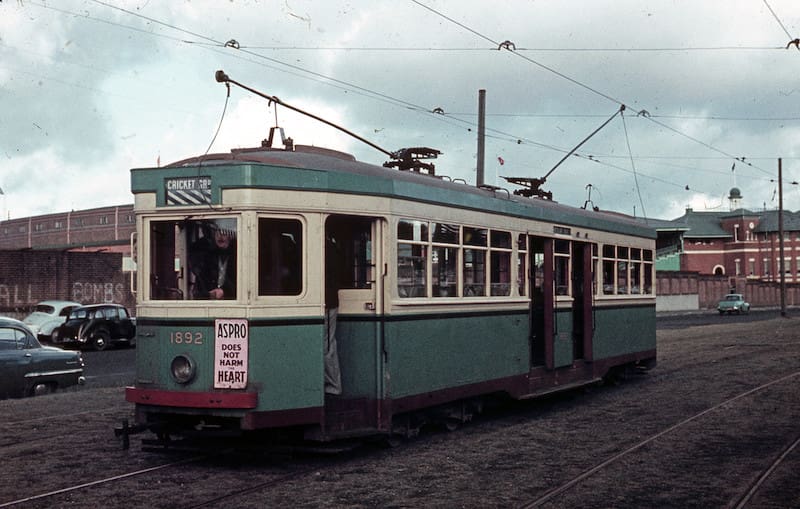Stroll along Parramatta Road and you’ll encounter boarded-up windows and papered-over shop glass. The urban artery, once part of the city’s tram network, has remained in a sorry state despite the numerous proposals to build a light rail along it. In 2016, Transport for NSW developed an internal assessment into the viability of such a project, while the Greens promised during the 2023 State election to construct a Parramatta Road light rail. However, as with many of Sydney’s wishlist projects, these plans have so far failed to advance beyond theory. Students at the University of Sydney and the road’s thousands of daily travellers are worse off for this.
The original 2016 WestConnex planning documents mandated that “at least two lanes of Parramatta Road” be reserved for public transport. This concession was based on the promise that traffic from Parramatta Road would be absorbed by the controversial WestConnex project. However, despite WestConnex’s final stages due for completion by the end of this year, the state government has failed to meet this requirement.
Fifty-five thousand cars bound for the city pass through Parramatta Road daily, and the road plays a crucial role in transporting many of the over 10,000 Sydney University students who commute from Western Sydney. The installation of dedicated public transport infrastructure would therefore bring clear benefits for commuters who face heavy traffic and slow speeds.
While bus lanes stretch along Parramatta Road, they’re shared with cars for much of the day. A 2020 report by the Committee for Sydney found that the average bus speed along Parramatta Road is a sluggish 14km/h. Research shows that faster public transport speeds significantly increase uptake, which would reduce congestion along Parramatta Road.
Light rail brings a myriad of benefits that makes it well-suited to the problem of Parramatta Road. Its fixed tracks allow trams to travel at higher speeds more safely than buses. The Citadis X05 trams used on the CBD line, for example, have a theoretical top speed of 80km/h. A single five-carriage unit can also carry 450 passengers, the equivalent of about nine buses, making them more space-efficient.
Reconfiguring Parramatta Road to build dedicated light rail lanes would not just allow for more efficient transportation, but also the economic revitalisation of the road. It’s likely that any future light rail would include a University of Sydney stop, bringing USyd’s transport connectivity into line with universities such as the University of New South Wales, which was directly linked to the CBD light rail in 2020. Easier access to Parramatta Road could bolster student life, with its surplus of empty storefronts a treasure trove of opportunity for new hospitality and entertainment venues. Improved mobility through a light rail could therefore have the flow-on effect of turning Parramatta Road into a cultural hub for young people.
When approached for comment, a University of Sydney spokesperson said that “we remain very concerned about the adequacy of current and future public transport options”, noting that the University has previously made submissions to the government suggesting various solutions, including a proposed Parramatta Road light rail. With a record 15,000 new enrollments in 2021, improving public transport access is becoming an increasingly urgent issue. Further enrollment increases will continue to strain Redfern station, which funnels masses of students through narrow streets on the final leg of their commute. A Parramatta Road light rail would distribute foot traffic more evenly by improving access to parts of the University’s large campus not serviced by Redfern station. The line could also better connect the University with the CBD by providing a link to Central station.
However, any light rail proposal faces competition from a potential alternative: the Sydney Metro. The light rail’s 450-passenger capacity would be a significant improvement on bus services, but the six-car metro trains can accommodate up to 1100 commuters and reach top speeds of 100km/h. While the light rail’s theoretical top speed comes close, in practice it’s limited to 60km/h along the fastest stretches of the network and has been heavily criticised for even lower speeds in everyday operation.
The University spokesperson noted, “we’ve also advocated for a metro connection between Camperdown and Westmead.” However, the newly-elected Minns government’s announcement of a review into Sydney Metro, which has blown out by $12 billion from initial estimates, may put a damper on hopes for future expansion. Despite this, the University remains optimistic, saying they hope the review “will provide a forum in which we are able to continue to advocate and push for mass transport solutions”.
There’s another sticking point for a potential Parramatta Road light rail— cost. The state government would need to fork out at least $2.7 billion, the estimated cost of the original 2016 Transport for NSW proposal, during a time when Treasurer Daniel Mookhey has signalled significant cuts to spending promised by the previous Coalition government.
The project, however, has a high-profile champion in the Minns government. Newly appointed Minister for Transport and Member for Summer Hill Jo Haylen has previously signalled support for the proposal: in a 2016 statement she said that “Parramatta Road is the perfect place for light rail”. There might yet be hope to bring the trams back to Parramatta Road.





